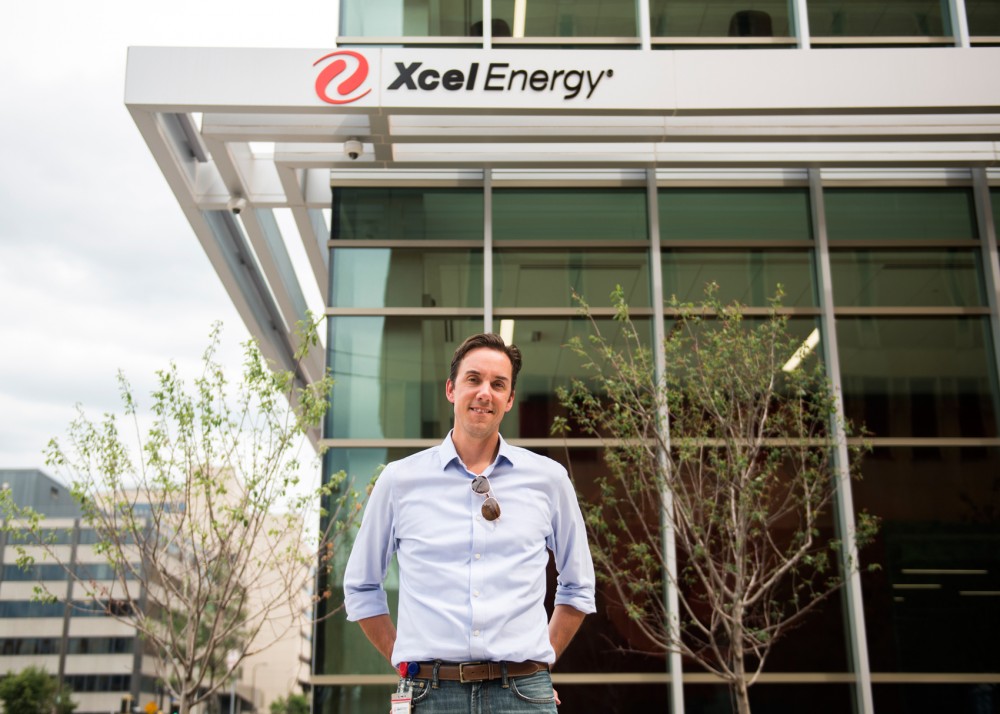While interning for Xcel Energy last summer, Jeremiah Cunningham found a solution to a problem the company didn’t know they had.
Cunningham, a University senior studying construction management, realized the company’s seed mix — planted around parts of their energy-grid infrastructure — wasn’t attracting many pollinators. He suggested a more native mix, and the change stuck.
Earlier this month, Cunningham said, Xcel planted the new pollinator-friendly seeds for the first time at its substation near Monticello, Minn. The company will also be planting the seed at several other substations this summer, he said.
“My internship was pretty boring sometimes because I just sat in my truck in the middle of nowhere,” Cunningham said. “That’s really where it started, when I was out sitting at a substation and actually saw a butterfly fly around … probably two acres of dried grass in the middle of nowhere that nobody cared about, and [I] thought there had to be a better way to do it.”
Xcel Energy has chiefly used MnDOT 250 — a general roadside seed mix — to reseed areas surrounding their power-grid fixtures, according to officials.
“It’s [our] basic seed, called ‘ditch-mix.’ It’s a good mix of seed for stabilizing and low maintenance and really easy to afford and easy to find,” said David Butler, the superintendent of civil construction at Xcel Energy and Cunningham’s supervisor during his internship.
Butler said he worked closely with Cunningham, often visiting him at construction or restoration sites to get updates on progress. One day, he said, Cunningham questioned him about Xcel Energy’s choice in seed mix.
“He said, ‘Hey David, we put this down because it follows the state’s [guidelines], but it doesn’t provide many pollinators much flowers. … Can we look at changing that?’” said Butler. “I said, ‘Great idea.’ I gave him a few names and numbers and told him to just dig around, talk to people [and] figure out how.”
After many phone calls and consultations, Cunningham said, he analyzed costs, testing and implementation strategies before pitching the idea to the higher-ups.
Cunningham said the work wasn’t part of his internship duties, but he thought of the greater benefits pursuing a project like this could afford.
The prairie grass seed is better for pollinators — usually insects that transfer pollen from flowers of the same species — according to Mike Evenocheck, a sales manager at Prairie Restorations Inc., a company which specializes in ecological restoration.
“Pollinators in general have taken a huge hit due to loss of habitat,” Evenocheck said, adding that the lack of pollinators ultimately affects food crops.
“You need to look at planting prairie grass because it stems global warming in a huge way. … Our biggest carbon sinks are our Great Plains, and we’ve turned them all into agriculture,” Cunningham said, pointing to the substantial amount of land Xcel owns under their transmission lines, which stretch for nearly 20,000 miles.
If fully implemented, Cunningham said, the switch to the native prairie seed could remove a substantial amount of carbon from the atmosphere every year.
While Xcel Energy officials didn’t release exact costs, they said the new seeding mix is more expensive but that they expect better fiscal returns in the long run.
“Eventually, we’ll do a comparison, you know — apples to apples, start to finish and see what the full cost and full impact are,” said Butler. “In the long term, we’re expecting it to save us money. I can’t say how much, but in a 10- to 20-year period, it’s going to require less maintenance.”
Cunningham said he estimates about 10 substations will either be planted or replanted with the pollinator-friendly prairie mix this year in Minnesota.
If the mix works out in the substations this summer, Butler said, Xcel may plant the mix in Wisconsin and also along transmission lines.
Butler said Cunningham’s contributions were far more than what was expected.
“This situation with Jeremiah is an excellent example of what can happen with an internship when the old guard status quo [says], ‘This is the way we’ve always done things,’ and the intern comes in and asks, ‘Well, why?,’” said Peter Hilger, the faculty director of construction management at the University.
This week, Cunningham was finishing up construction on Xcel Energy’s new corporate offices downtown as an assistant project manager for OPUS, a local construction company, he said.
“Here’s how one small idea at one location can blossom, literally, into a wide-ranging idea for Xcel,” Hilger said. “The success remains to be seen, but all indications are that the research Jeremiah did set them on a course to make it successful.”








